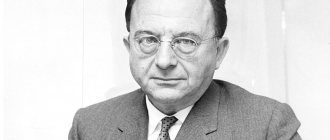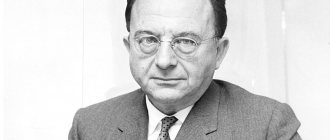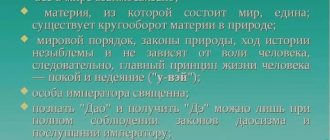Recently, transpersonal psychology has become increasingly popular. A new direction in psychological science explores the superpowers of the individual and his relationship with the Universe. The transpersonal discipline not only studies altered states of consciousness, but also seeks ways to solve the psychological problems of humanity.
What is transpersonal psychology?
Transpersonal psychology is a science that studies transpersonal, that is, beyond the boundaries of the simple “I,” states of the psyche and consciousness of an individual. The scientific direction appeared at the end of the sixties of the last century on the basis of the psychoanalytic postulates of K. Jung and the humanistic worldviews of A. Maslow. Scientists about solving personality problems have also noticed that there is a kind of collective unconscious and that all individuals unconsciously influence each other to varying degrees.
The roots of transpersonal science lie in the history of various religions and cultures, as well as in many well-known spiritual practices. Stanislav Grof, Alan Watts, Anthony Sutich, Abraham Maslow, K. Wilber, A. Mindell, C. Tart, S. Krippner and others are rightfully considered the founders of this trend in psychology. Each scientist added to the treasury of knowledge of transpersonal psychology, and some psychologists developed their own direction and conducted a number of new experiments.
Transpersonal psychology offers its explanation for parapsychological phenomena. Science studies superhuman experiences that do not exist within the normal state of the Ego, as well as experiences associated with death, spiritual crisis, personal resources, the emergence of intuition, and the transition to higher spiritual states.
Areas of transpersonal psychology:
- altered states of consciousness;
- parapsychology;
- various spiritual practices, including religions;
- the effect on the consciousness of an individual of psychedelic substances;
- methods of respiratory influence on the psycho-emotional state of an individual;
- yoga and various methods of meditation;
- aging processes;
- experiences closely related to death;
- spiritual growth.
Notes[edit]
- ↑ Cowley, Au-Deane S. & Derezotes, David (1994) Transpersonal Psychology and Social Work Education. Journal of Social Work Education, 10437797, Winter, Vol. 30, Issue 1.(English)
- ↑ Miller, John J. (1998) Book Review: Textbook of Transpersonal Psychiatry and Psychology. Psychiatric Services 49:541-542, April 1998. American Psychiatric Association.
- ↑ Davis, John V. (2003). Transpersonal psychology // Taylor, B. and Kaplan, J., Eds. The Encyclopedia of Religion and Nature. Bristol, England: Thoemmes Continuum.
- Psychological encyclopedia. 2nd ed. / Ed. R. Corsini, A. Auerbach. - St. Petersburg: Peter, 2006.
- Vich, M. A. (1988). Some historical sources of the term “transpersonal”. Journal of Transpersonal Psychology, 20 (2) 107-110.
- ↑ Scotton, Bruce W, Chinen, Allan B. and John R. Battista, Eds. (1996) Textbook of Transpersonal Psychiatry and Psychology. New York: Basic Books.
- ↑ Kasprow, Mark C & Scotton, Bruce W. (1999) A Review of Transpersonal Theory and Its Application to the Practice of Psychotherapy. Journal of Psychotherapy Practice and Research, 8:12-23, January.
- Turner, Robert P.; Lukoff, David; Barnhouse, Ruth Tiffany & Lu Francis G. (1995) Religious or spiritual problem. A culturally sensitive diagnostic category in the DSM-IV. Journal of Nervous and Mental Disease, Jul;183(7):435-44.
- Lukoff, David, Lu, Francis G. & Turner, Robert P. (1998) From Spiritual Emergency to Spiritual Problem - The Transpersonal Roots of the New DSM-IV Category. Journal of Humanistic Psychology, 38(2), pp. 21-50.(English)
- Grof, Stanislav & Grof, Christina (eds) (1989) Spiritual Emergency: When Personal Transformation Becomes a Crisis (New Consciousness Reader) Los Angeles: JP Tarcher.
- Diagnostic and Statistical Manual of Mental Disorders (DSM-IV) Code V62.89 (American Psychiatric Association, 1994)
- Lu FG, Lukoff D, Turner R (1997) Religious or Spiritual Problems. In: DSM-IV Sourcebook, Vol. 3. Widiger TA, Frances AJ, Pincus HA et al., eds. Washington, DC: American Psychiatric Association, pp1001-1016.
- Milstein, Glen; Midlarsky, Elizabeth; Link, Bruce G.; Raue, Patrick J. & Bruce, Martha (2000). Assessing Problems with Religious Content: A Comparison of Rabbis and Psychologists. Journal of Nervous & Mental Disease. 188(9):608-615, September.(English)
- Aanstoos, C. Serlin, I., & Greening, T. (2000). History of Division 32 (Humanistic Psychology) of the American Psychological Association. In D. Dewsbury (Ed.), Unification through Division: Histories of the divisions of the American Psychological Association, Vol. V. Washington, DC: American Psychological Association. (English)
- Alexander, Gary T. (1980). William James, the Sick Soul, and the Negative Dimensions of Consciousness: A Partial Critique of Transpersonal Psychology. Journal of the American Academy of Religion, XLVIII(2):191-206.
- Daniels, M. (2005). Shadow, Self, Spirit: Essays in Transpersonal Psychology. Exeter: Imprint Academic.
- Ellis, Albert (1989) Dangers of Transpersonal Psychology: A Reply To Ken Wilber. Journal of Counseling & Development, Feb89, Vol. 67 Issue 6, p336, 2p.
- Wilber, Ken (1989) Let's Nuke the Transpersonalists: A Response to Albert Ellis. Journal of Counseling & Development, Feb89, Vol. 67 Issue 6, p332.(English)
- Walsh, R. & Vaughan, F. (1993). On transpersonal definitions. Journal of Transpersonal Psychology, 25 (2) 125–182.
- Friedman, Harris (2000) Toward Developing Transpersonal Psychology as a Scientific Field. Paper presented at Old Saybrook 2 conference, May 11 - 14, 2000, State University of West Georgia.
Basic ideas of transpersonal psychology
Transpersonal psychology is based on the existence of an unconscious component of the psyche of any individual. Unconscious components influence the way an individual thinks, views, reacts, acts and behaves throughout his life. The unconscious layer of the psyche includes life experiences that are repressed from consciousness for various reasons. The individual’s subconscious also contains memories that are in no way tied to his life, for example, various incarnations of himself or the collective unconscious.
Transpersonal discipline emphasizes important psychological aspects of personality. However, the dominant role is given to spirituality. This psychological science studies consciousness, which in certain states is capable of going beyond its own Ego. Expanding the boundaries of the Ego occurs when an individual is immersed in an altered state of personal consciousness.
There are various techniques that help a person understand himself and his own inner world. At the moment of transpersonal experiences, the individual’s psyche undergoes various changes. A person begins to feel unity with the cosmos and resolves his accumulated psycho-emotional problems.
If an adult is not able to cope with his psychological problems on his own, we recommend turning to a specialist.
Advantages and disadvantages
Positive sides:
- availability;
- opportunity for self-study;
- expansion of consciousness;
- personal development;
- variety of methods.
You can study the methods of the trans approach on your own or in special consciousness growth groups. Thanks to the techniques of self-research and self-medication, you can get rid of many somatic diseases, gain confidence and inner harmony.
The main disadvantage of discipline is prejudice. It is not recognized by the scientific community as a science, which means it has no official status. This gives scope for action to charlatans and lovers of quick money. Having declared himself as a specialist in the paranormal sciences, a person with the ability to lead into a trance can instill false experiences in listeners and pass them off as a real reaction of the subconscious.
Participation in such sessions harms the psyche, forms false memories, and can provoke depression and apathy.
The difference between transpersonal psychology and other sciences
Many areas in psychology are scientific and objective. For traditional psychological disciplines, it is important to obtain reliable facts through research and experimentation. However, modern psychology ignores the phenomenal manifestations of personality, that is, transpersonal experience.
Principles of transpersonal psychology:
- the consciousness of an individual is commensurate with the cosmos and cannot be limited by anything;
- personality is considered in a variety of contexts;
- the consciousness of the individual is studied in combination with the mind of the cosmos;
- soul and reason constitute the whole and determine personality;
- covers a wide range of knowledge, even from diametrically opposed sciences.
However, scientific communities criticize transpersonal psychology. The fact is that for many years scientists in this direction have not been able to provide scientifically proven facts or present to the world the results of the methods used during the experiments. True, according to the established scientific approach, transpersonal psychology can combine psychophysics and psychophysiology.
The birth of the “fourth wave”
In the introduction to the second part of his work “On the Psychology of Being,” Maslow said that he believes “humanistic third psychology is a kind of transitional configuration that prepares society for the most “elevated” fourth wave in psychology - transpersonal, transhuman. It, in turn, will be more directed towards the world as a whole, rather than towards human needs and interests, looking far beyond the boundaries of human nature and independence in the development of the human individual, his self-actualization and so on.”
In the process of many discussions about how to characterize the newest movement that arose against this background, in 1968 the name “transpersonal psychology” was legitimized by the range of its founders - A. Maslow, E. Sutich, S. Grof and others. It is necessary to highlight that the name “transpersonal” was first used back in 1905 in the field of psychology by the North American specialist William James in his own direction of psychology at the Harvard Institute.
It is also necessary to note that transpersonal psychology takes its origins from historical events related to the development of culture and religion. In addition to William James, the founders of this direction before the advent of the modern type of transpersonal psychology include: Otto Rank with his thoughts on the trauma received at birth; K.G. Jung, who filled psychological science with the concept of archetypes, mythical, cultural, cult and supernatural fixations; R. Assagioli was a former psychoanalyst, whose psychosynthesis he founded was based on the theoretical part of occultism, religious-mystical and Buddhist teachings, overcoming, with their assistance, European cultural and anthropological restrictions; In addition, it is necessary to mention the transcendentalists from America - Emerson and Thoreau.
Methods of transpersonal psychology
Transpersonal psychology uses the following techniques:
- breathing psychotechnics;
- psychophysiological study;
- techniques using psychedelic substances;
- psychodiagnostic methods;
- effects on the senses and touch;
- visualization and practice with imagination.
Separately, techniques are used to initiate changes in consciousness:
- At first, attention focuses on some object, then suddenly switches to another object;
- stimulation through restriction of drinking during intense physical activity;
- increased activity (running without stopping);
- exposure to low and high temperatures (swimming in cold water, walking on hot coals);
- exposure to sounds and melodies (constant chanting);
- solitude and limitation of physical activity;
- creating conditions under which it is impossible to sleep;
- holotropic breathing;
- rebirthing;
- ThetaHealing.
Fusion therapy
On the other hand, many of the techniques used in transpersonal therapy, such as meditation and psychedelic drugs, are being studied in laboratories around the world. And eminent neuroscientist and specialist in post-traumatic stress disorder Bessel van der Kolk considers dancing, MDMA, conscious breathing, yoga, rhythmic drumming and martial arts as techniques for overcoming psychological trauma. The researcher explains why unconventional methods can be used in the treatment of PTSD:
“The rational executive brain is great at helping us understand where our feelings come from. At the same time, he is not able to eliminate emotions, sensations and thoughts. Understanding why a person feels a certain way does not change how they feel.”
Psychotherapist Amina Nazaralieva says that “serious people in clinical practice do not use holotropic breathing,” but the hyperventilation technique is used in CBT.
When working with a client suffering from panic disorder, a specialist uses, for example, exposure, during which he needs to breathe frequently and deeply. This artificially causes panic and shows that it is impossible to die or go crazy from it, which is what people often fear during panic attacks.
“These effects are very similar to what I experienced when I practiced holotropic breathwork. Only then, during my youth, this practice was sold as a means of healing from all diseases, a way to achieve incredible spiritual growth. But there is no evidence of this in the scientific literature,” says Nazaralieva.
Transpersonal psychology of Grof
The subject of S. Grof's research was the unconscious in the psyche of an individual in a state of altered consciousness. The scientist learned to penetrate the realm of the unconscious through psychedelic drugs. Soon these psychoactive substances were banned, and the researcher developed a new method of penetrating an altered state of consciousness. We are talking about holotropic breathing.
True, before moving to the level of the unconscious, the individual faces a number of obstacles:
- sensory (the senses are activated at the moment of penetration into the unconscious);
- unconscious of an individual nature (psychotrauma and other memories from the past that are repressed into the subconscious);
- perinatal matrices (death and birth related experiences);
- the transpersonal component of the psyche that goes beyond space and time (the relationship of the individual with the Universe).
According to the scientist, many unresolved problems of an individual are rooted in his subconscious. A person can get rid of traumatic experiences if, at some level of the subconscious, he encounters them and experiences them again. It is for this purpose that the holotropic breathing method exists.
Using deep breaths, the individual “moves” into an altered state of personal consciousness. Relaxing music is also used. Through such techniques, the flow of energy within is activated and the individual follows it. The flow of a depressed state is transformed into a flow of experiences. At such a moment, the individual’s psyche is malleable, and he himself can scream, take a variety of involuntary poses, and also experience a wide range of emotions. The energy of the flow is healing. The negativity accumulated in the subconscious is released and the individual relaxes.
The Grof method is applicable for the treatment of psychological disorders, as well as the treatment of a number of mental illnesses. Using the holotropic method, you can achieve the development of your own abilities and activate hidden talents. Grof's research helps people overcome their severe crises and solve all sorts of problems.
Altered Consciousness
Transpersonal research studies states of altered consciousness when it goes beyond the usual “I”. The bulk of transpersonal psychology materials are taken from dream interpretation, meditation experience and paranormal phenomena.
Representatives of this movement admit the existence of higher powers, but avoid attachment to any particular religion. Transpersonal psychology strives for freedom, love and universal brotherhood. The main task of this direction is to overcome personal isolation, self-sufficiency and centering. What did its representatives say about this science?
Rebirthing technique
American scientist Leonard Orro developed a breathing technique 40 years ago and called it rebirthing. Thanks to breathing exercises, the individual seems to be reborn. He gets rid of negative experiences that are in his subconscious in a depressed state.
At the moment of birth, as well as throughout life, an individual experiences a number of traumatic events that negatively affect his mental and physical state. Painful memories are consciously suppressed and repressed into the unconscious. The individual develops complexes, phobias and fears.
The rebirthing technique can eliminate the consequences of individual suppressed mental suffering. The individual plunges into a state that can even be called a second birth. Thanks to breathing techniques, an individual displaces negative emotions from the subconscious, relives all the unpleasant moments of his life and transforms experiences into positive energy. The individual is immersed in a state of euphoria and harmony. Breathing practice helps to get rid of problems accumulated in the depths of the subconscious, and also releases psychoenergy that previously “nurtured” these suppressed experiences.
Rebirthing has much in common with holotropic breathwork. Both of these breathing techniques allow you to penetrate into the layer of the unconscious.
Rebirthing elements:
- the individual breathes through the nose or mouth, and the inhalation can be different, but the exhalation is always ordinary;
- at the moment of relaxing breathing, the body should be completely relaxed, while the individual lies on his back, does not cross his legs and does not think about anything;
- attention should be focused on the sensations in your own body; if pain or tingling appears, it means that a negative memory has been activated, it needs to be felt;
- negative experiences should be transformed into positive emotions (treat the past with humor or simply enjoy the release of negativity);
- have confidence in breathing practice and the processes occurring in the body and consciousness.
Ken Wilber's theory
And despite all the obstacles and misunderstandings, the methods of transpersonal psychology continue to develop. At one time, K. Wilber was the founder of a separate approach in it, which was called integral. In his first scientific work, “The Spectrum of Consciousness,” he came to the conclusion that human consciousness consists of several levels (spectra) of self-awareness. These spectra cover all possible levels of consciousness, ranging from boundless unity with the Universe and ending with the level of the mask, where the individual identifies himself with something, suppressing his negative characteristics.
According to Ken Wilber there are 5 levels:
- Spectrum mask. Being in a different social environment and falling under its influence, a person can suppress or even repress his negative qualities, memories, experiences, thereby limiting himself. As a result, a person loses the opportunity to be fully aware of himself.
- The spectrum of body and ego. At this level, a person clearly understands that he consists of a physical shell (body) and soul. Although the concept of “soul” still remains something abstract, and not a lived experience.
- Existential spectrum. The individual begins to realize himself as a kind of psychophysical being that lives in space-time dimensions. A person realizes that he is a person, and there is also an external world.
- Transpersonal spectrum. At this level, the realization comes that human life is not limited to the physical body. The individual realizes that he is something more, but still does not feel unity with the Universe.
- Unified consciousness. At this level, the final unity with everything that exists around is implied. Man becomes inseparable from existence, that is, he can be considered all that exists.
Consciousness develops in a hierarchical sequence from the lowest levels to the highest.
Theta healing technique
The technique of energy healing was invented by V. Stibal at a time when she was suffering from bone cancer. With the help of its development, you can change your life for the better and heal from any disease. An individual is able to feel harmony and peace through meditation and special training.
The author of the technique offers two “routes” for getting into the Theta state:
- First way.
You need to sit on a chair, straighten your back, and lower your feet to the ground. Then close your eyes and take several deep breaths in and out, holding your breath briefly after each. Constantly relaxing, it is important to move your thoughts to the heart area and collect all the energy there.
Then you need to take this energy clot from the heart and lower it to the center of planet Earth. At this moment, you can feel how the energy of the Earth spreads throughout the body. Then this energy needs to be mentally collected into a huge ball and raised above your head. By an effort of thought, one should lift oneself above the house, trees, city, continent, Earth and enter into space.
There you need to mentally continue to move past the glimpses of white and dim light. It is important to pass through the unsteady mass and penetrate into the white and iridescent light. You can swim in it. True, during such a flight you should avoid the color blue. You need to act quickly. The main thing is to achieve a pearly white glow.
- Second way.
You should sit back and relax completely. Then close your eyes and take a few deep breaths. It is important to achieve relaxation while breathing. Then you need to concentrate on the heart. At this moment, you should imagine that you and the chair you are sitting on are one molecular whole. The molecules of the chair intertwine with the molecules of the body, but each object retains its own shape.
Then you need to merge with the room and imagine yourself on the same molecular plane with all the things in it. Then you need to feel the molecular unity with the house, city, forests, fields, and Earth. Don't stop. Mentally you need to go into space. It is necessary to unite with the flashes of white light, the cosmic jelly-like substance. It is important to merge with the energy of the Universe. This way you can get into the Theta state.
This is not a panacea
I had three sessions with Matrenitsky, during which I tried all the techniques that he owned. Each time he helped me formulate a request that I wanted to work with in a trance state. Then he asked me to focus on bodily sensations: focus on how my heart beats, how my body becomes heavier as it relaxes. Then, following his instructions, I imagined what my anxiety looked like. She was a red ball, a rock, and a cloud of dust. I think these pictures depended on my general mood. For the remaining time, the doctor was silent, only occasionally asking questions like “What do you see now?”, “What do you want to do?” And I described to him everything that my imagination drew.
There are meditations during which you need to imagine how a flower or tree is growing inside you. In a trance meditation I practiced with a therapist, I did the same thing, but without the intention of seeing a specific picture. I gave free rein to my imagination and sometimes “watched” a film about my childhood, sometimes about the present, and sometimes I saw myself flying in space and hitting planets with anger. But I always managed the visuals myself. Apparently, this is what helped me relieve anxiety - in imaginary worlds I could do anything if I was as relaxed and concentrated as possible.
The anxiety disappeared within a month. And I was delighted! Imagine if you lived your whole life with your eyes closed, and then they were opened to you - and you saw cherry blossoms for the first time. That's pretty much how I felt.
Another patient of Matrenitsky, Olga, also stopped worrying. During the sessions she could not relax for a long time - her habit of controlling herself and everything around her was so strong. Therefore, at home she additionally learned to meditate. As a result, the most important experience that Olga gained during therapy with the doctor was letting go of control.
“Before, I couldn’t sit quietly and watch a movie: I needed to do something “useful” at the same time. I overprotected my loved ones and fell into hysterics if my son or mother did not answer me when I called. And after therapy, I seemed to exhale, relaxed for the first time in my life. My relationship with my family has improved, I started working with pleasure and learned to relax,” Olga describes her new state.
For six months there was no anxiety in my life at all. But then the anxiety returned, although its intensity decreased significantly. If before she looked like an annoying fly, now she looks like a tired one.
And the skills I acquired in countless sessions of cognitive behavioral therapy helped me cope with it.
Olga is also sure that transpersonal therapy alone is not enough: “Yes, I dug up a bunch of deep-seated problems and gained a different life experience. But my behavior hasn't changed. In order to master these “fossils” and integrate them into life, I have to go to another Gestalt therapist.”
Vladislav Matrenitsky says that his approach is not a panacea. And Amina Nazaralieva concludes that you need to start dealing with a mental problem with methods whose effectiveness and safety have been scientifically proven.
Transpersonal Psychology Training
You can gain knowledge from the field of transpersonal discipline at seminars on esotericism or at institutes that teach this science. The main requirement for students is the desire to gain knowledge from the field of psychology, discover the realm of the unknown and learn to use the experience gained for the benefit of themselves and those around them.
Transpersonal science will help you understand yourself and the world around you. Thanks to her methods, you can improve your condition and life in general. By getting rid of problems and releasing energy, an individual is healed from various kinds of mental illnesses and gains harmony with the world. Knowledge of transpersonal discipline can be applied to unlock your creative potential and develop personal abilities.
Psychosynthesis by R. Assagioli
From the point of view of Assagioli, a supporter of the ideas of psychoanalysis, all human problems are related to the fact that he loses internal integrity and harmony. Some aspects of the human psyche begin to contradict each other and their separation occurs. A similar process (lack of integrity, synthesis) leads to various diseases.
In order to unite the disparate parts of the psyche, Assagioli developed the method of psychosynthesis.
Assogioli distinguishes two stages of psychosynthesis:
- Personal psychosynthesis (combining all disparate elements of personality into a single whole). At this stage, a healthy personality is formed.
- Spiritual psychosynthesis (work with different levels of the psyche - transpersonal area). At this stage, a person acquires a sense of the energy that was previously inaccessible to him and learns to use it in life.
A person does not immediately experience changes in his life thanks to the practical method of psychosynthesis. From Assagioli’s point of view, a person needs time in order to accept new experience, “the maturation of the mental fetus must take place” [3].
Thus, from the point of view of the transpersonal direction, a person has access to all the information of the Universe and is connected with all of humanity. Representatives of this direction focus on releasing new “energy” and getting rid of various problems through altered states of consciousness. With the help of various techniques developed by this area of psychological science, a person is supposedly healed and gains integrity in his relationship with the world.










